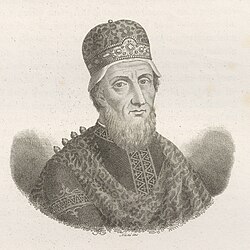History
His father,Agnello,had appointed him co-doge while his brother Giustiniano was away in Constantinople. When Giustiniano returned,Agnello was deposed and Giovanni,who was part of the pro-Frankish faction,was exiled to Zara (in today's Croatia). Giovanni was recalled by his brother from Constantinople in 829 and appointed to succeed him. He was duly elected by the assembly and continued the work of Giustiniano in the construction of a new basilica for the body of Saint Mark. The rest of his reign was occupied by quarrels and problems,internal and external.
The first problem was the return of Obelerio degli Antenori,Doge of Venice from 804 to 811,from Constantinople after twenty years of exile. He disembarked at Vigilia,near Malamocco,with a band of followers and laid claim to the dogeship. Malamocco and Vigilia declared for him and both were burned by Giovanni. Obelerio was killed and his head was displayed to the people.
A revolt in Venice itself placed one of the tribunes,Caroso,on the throne for less than six months,during which Giovanni,surprised by the participation of trusted family members in the rebellion,resided in refuge at the court of Lothair,King of the Lombards. Soon,the Participazio had removed Caroso and blinded him,recalling Giovanni to Venice. His dictatorial rule provoked an aristocratic reaction,led by the Mastalici,and one night in 836,an ambush was laid at the exit of the church of S. Pietro in Olivolo. They arrested him,tonsured him,and put him in the church at Grado.
This page is based on this
Wikipedia article Text is available under the
CC BY-SA 4.0 license; additional terms may apply.
Images, videos and audio are available under their respective licenses.
